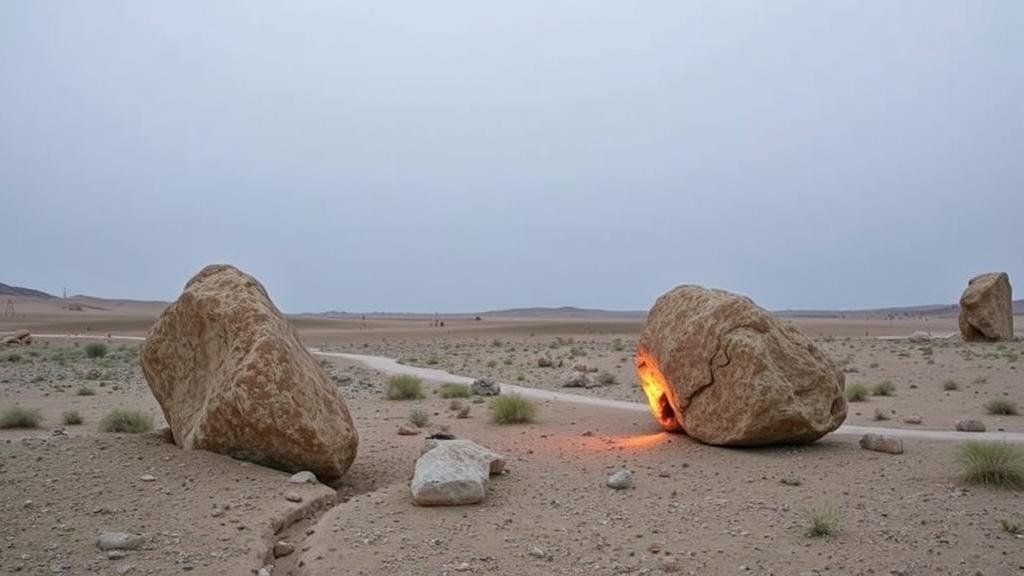Searching for the “Living Stones,” rocks said to move and grow in the deserts of Central Asia.
Searching for the Living Stones in Central Asia
The Living Stones, a fascinating geological phenomenon located in the deserts of Central Asia, have captivated the imagination of scientists and adventurers alike. These eerie rocks are rumored to move and grow, leading to myriad myths and folklore centered around their existence. In this article, we delve into the origins, characteristics, and scientific explanations for the phenomena surrounding these mystical stones, primarily found in deserts such as the Taklamakan and Gobi.
Location and Historical Context
The concept of the Living Stones is largely anchored in the arid landscapes of Central Asia, particularly in the regions of Xinjiang in China and Mongolia. Taklamakan Desert, famed for its harsh conditions, spans approximately 337,000 square kilometers (130,000 square miles) and is often regarded as one of the most inhospitable environments on Earth.
The tales of these stones date back to ancient civilizations, where nomadic tribes would speak of rocks that shifted positions overnight. Such legends have persisted through centuries, partly fueled by the remote and rugged nature of these deserts. In 1937, Soviet geologist A.K. Negovsky published a paper describing these moving stones, providing a scientific framework to investigate these claims further.
Characteristics of the Living Stones
So what exactly are the Living Stones? To the untrained eye, they appear as ordinary rocks scattered across the desert floor. But, closer examination reveals unique attributes:
- Shape and Size: The stones often exhibit peculiar shapes and can range from small pebbles to massive boulders.
- Color Variations: Many are characterized by a distinct coloration due to mineral deposits, giving them an unusual appearance.
- Growth Patterns: Some claim that these rocks grow larger over time, leading to speculation about their biological properties.
The visual appeal of these stones, combined with their enigmatic reputation, has drawn researchers, geologists, and curious visitors seeking to uncover their mysteries.
Scientific Explanations Behind the Mystique
The idea of stones moving and growing often leads to skepticism. But, scientists have proposed several mechanisms to explain the phenomena associated with the Living Stones:
- Wind Erosion: In these vast deserts, wind can create conditions that cause rocks to shift slightly, leading to the impression that they are moving.
- Thermal Expansion: Variation in temperature throughout the day can cause rocks to expand and contract, resulting in minute movements that accumulate over time.
- Biological Factors: Some researchers have discovered particular types of microbial life that thrive in these environments, which may contribute to the erosion and shaping of the rocks.
Each of these explanations lends credibility to the legends of living stones without resorting to superstition.
Real-World Applications
The folklore surrounding the Living Stones has not only inspired scientific inquiry but has also had practical applications. study of these unique geological formations has provided valuable insights into:
- Climate Adaptation: Understanding how these stones react to extreme conditions can inform climate resilience strategies.
- Geological Research: Investigations of mineral deposits and movement can provide clues about tectonic activity and earth processes.
- Cultural Heritage: The stories surrounding the Living Stones have cultural significance for local communities, offering a link to their historical narratives.
Conclusion and Takeaways
The Living Stones of Central Asia represent a unique intersection of mythology and science. While they may not possess the supernatural qualities attributed to them in folklore, their movement and growth can be explained through a variety of natural phenomena. As researchers continue to explore the silent deserts where these rocks reside, the stories surrounding them will undoubtedly persist, adding layers to our understanding of our planets geological diversity.
To wrap up, for those intrigued by the mysteries of the world, the Living Stones offer a compelling reason to explore the remote deserts of Central Asia, blending adventure with education.



